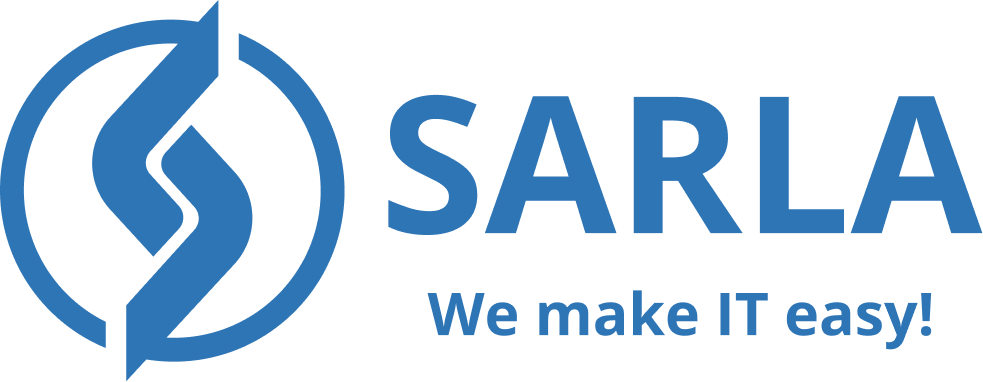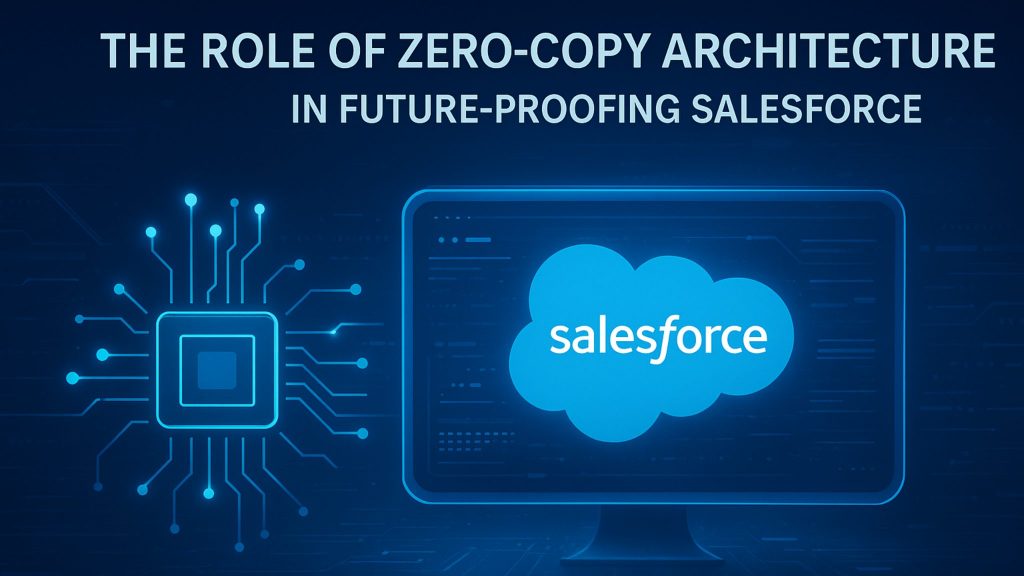Data has become the backbone of every modern business. Companies rely on data to make decisions, personalize experiences, and fuel growth. However, as businesses expand, managing data is becoming increasingly complex. Copying data between platforms creates compliance challenges. And these companies have been looking for seamless options that can help with the issues. Salesforce recognized this challenge and introduced Zero-Copy Architecture. It is a revolutionary approach that allows companies to access data where it lives, without moving or duplicating it. First unveiled at Dreamforce 2023, it represents the next generation of secure, scalable data integration. It ensures that businesses can use their data in real time for analytics.
What Is Zero-Copy Architecture?
Zero-Copy Architecture is a modern data framework that lets systems “access data directly from its source” instead of creating multiple copies across platforms. In traditional integrations, data must be extracted and loaded (ETL) into another database for use. While this works, it often results in compliance risks because data is scattered in multiple locations.
With Zero-Copy Architecture, Salesforce allows real-time access to data wherever it’s stored without creating duplicates. Essentially, instead of copying the data, Salesforce connects securely to it. This means your CRM can analyze and act on data in its original environment.
This architecture was built in partnership with Snowflake and later expanded to Google BigQuery to form what Salesforce calls the “Zero-Copy Partner Network”. The ultimate goal is to create AI-ready data experiences across multiple platforms.
Why Zero-Copy Matters for Modern Businesses?
- Improved Data Security and Compliance
The chance of illegal access or leaking rises with each copy of data. The data never leaves its original storage environment when using ZCA. It greatly lowers exposure risks by remaining governed by current security and privacy rules.
For companies subject to stringent data rules like the GDPR in Europe, HIPAA in the healthcare industry, or FINRA in the financial services industry, this strategy is especially beneficial. Salesforce assists businesses in adhering to data residency and protection regulations by providing access to existing data. Additionally, it gets rid of “shadow data,” which are untracked copies that frequently provide unnoticed security threats.
- Real-Time Data Access
Delays are introduced by traditional data transfers. Salesforce Data Cloud’s Zero-Copy Architecture enables real-time insight extraction and direct connections to external systems. For instance, a retail business does not have to wait for data to sync overnight in order to evaluate real-time sales transactions using Snowflake.
Faster decision-making, current dashboards, and AI models that employ the most recent data are all guaranteed by this real-time access. It also implies that teams in charge of marketing, sales, and customer service can reply to clients with pertinent and timely information.
- Cost Efficiency and Scalability
Maintaining multiple copies of data across systems drives up storage costs and IT workload. By eliminating the need for duplication, businesses save significantly on infrastructure expenses. It also simplifies data maintenance as there’s no need to reconcile multiple versions of the same dataset.
As organizations grow, Zero-Copy Architecture allows them to scale without worrying about performance slowdowns. It reduces the complexity of integration while supporting enterprise-level workloads.
- AI-Ready Infrastructure
One of the biggest advantages of ZCA is how it supports AI innovation. Generative AI tools like Einstein GPT and intelligent agents like Agentforce rely on access to contextually accurate data. With ZCA, these AI models can process live information directly from its source, without outdated or incomplete datasets.
This capability ensures that AI-driven predictions are more reliable and transparent. It also means that sensitive data used by AI stays protected, as Salesforce’s Einstein Trust Layer ensures every AI interaction is secure and compliant.
How Salesforce Implements Zero-Copy Architecture?
Salesforce has made major strides in bringing ZCA to life across its ecosystem.
- Salesforce Data Cloud + Snowflake Integration
Announced in 2023, this integration allows organizations to use Salesforce Data Cloud to access and analyze Snowflake data directly without exporting it. For example, a financial services firm can visualize live transaction data in Salesforce dashboards without physically transferring sensitive records.
- Expansion to Google BigQuery
In 2024, Salesforce extended Zero-Copy Architecture to Google BigQuery, broadening access for businesses using Google Cloud infrastructure. This provides secure connectivity for data stored across multiple cloud environments.
- Zero-Copy Partner Network
Salesforce established a growing partner network to expand this architecture across more data platforms. Partners adhere to strict governance standards to ensure consistency and compliance across integrations.
- Einstein Trust Layer Integration
All data accessed through ZCA still passes through the Einstein Trust Layer, which handles encryption and logging for auditability. This makes Salesforce one of the few CRM platforms that combine AI, analytics, and governance in a secure environment.
Key Business Benefits
1.Unified Customer 360 View
Zero-Copy Architecture allows Salesforce to unify customer data across systems in real time. Companies can build a 360-degree view of each customer without moving any data. This means more personalized experiences and better decision-making.
- Lower Latency for AI and Analytics
Because ZCA eliminates the need for ETL processes, Salesforce can deliver near-instant data access for analytics and AI. Dashboards refresh faster, and sales teams can act on insights immediately.
- Scalable Collaboration Across Teams
All teams can collaborate on live data views without risking inconsistencies. They work from the same source of truth, reducing reporting errors and improving alignment.
Conclusion
Zero-Copy Architecture marks a major leap forward in how businesses manage and use data within Salesforce. By enabling real-time access, it lays the foundation for a smarter and AI-ready future. As AI and analytics continue to evolve, ZCA will play a vital role in helping organizations remain competitive. Whether it’s a healthcare provider maintaining HIPAA compliance or a retailer personalizing offers on the fly, Zero-Copy Architecture ensures that innovation doesn’t come at the cost of trust.


Dante4563
https://shorturl.fm/zBhbB